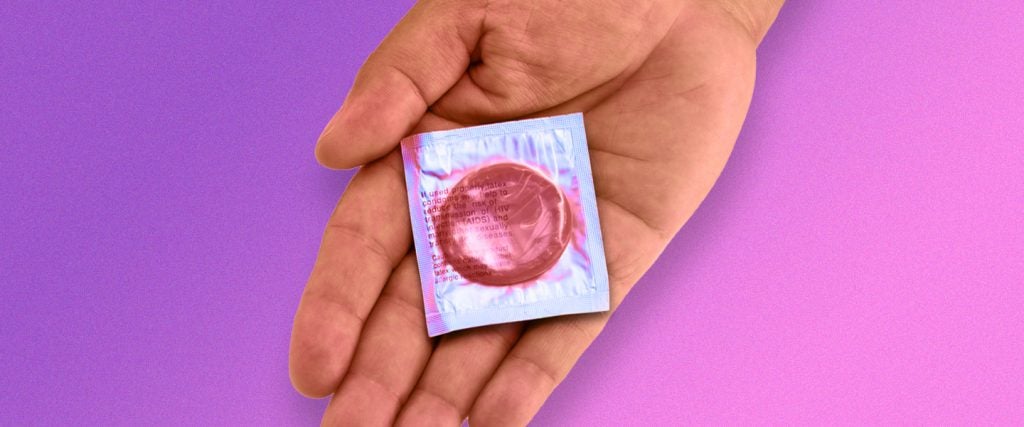Amid all the hysterics of young teenagers attempting to roll condoms onto bananas, it appears a key piece of information has commonly got lost in sex education: How old you have to be to buy them. According to Google Trends, the question has been searched pretty consistently over the last five years, while Reddit is awash with horny teenagers desperately searching for tips. The answer, in fact, is that there’s no legal age limit to buy condoms in most countries, including the U.S.
Condoms are available online and in most pharmacies, supermarkets, convenience stores and health centers — the latter of which often give them out for free. You can use this condom finder tool to find out where you can acquire them for zilch, but elsewhere, they’re likely to cost between $2 and $6 for a pack of three.
Now, given that the sex ed you got at school probably didn’t teach you about who can buy condoms and where, it probably didn’t imbue you with the proper knowledge about what size to buy or how to use them, either. When it comes to the fit of the rubber, there’s a handful of condom size calculators online — all you have to do is measure the girth and length of your penis, and the calculator will suggest a suitable fit. This isn’t foolproof though, as the calculators can only technically provide an estimate — if you want to truly find out your size, you’ll have to try a few on for size (in the comfort of your own home, of course).
When it comes to making use of the condom, Healthline advises that you don’t use one with a torn wrapper or any kind of leak, with holes in, nor one that feels dry, stiff or sticky, or exudes an unpleasant smell. But do use a new one each time you have sex, change it after 30 minutes and only ever use one at a time. When used correctly, condoms are 98 percent effective, but when used incorrectly, they’re only 85 percent effective (which is still better at preventing pregnancy and avoiding STIs than unprotected sex).
Of course, this is all very basic stuff — the kind of information that school sex education should be providing to kids. And yet, it often falls down to switched-on parents, activists or grassroots and non-profit organizations (like Planned Parenthood) to fill the gaps where sex education fails — which, in the case of abstinence-only sex ed, is everywhere. In this type of sex ed, educators are banned from teaching students about contraception or condom use, and are told to cite STIs as reasons to remain abstinent.
As you’ll have to take matters into your own hands, you might want to stock up on some reading material. Studies have confirmed that reading about sex is considered is the best way to not only learn about it (proper sex education aside), but to thrive at it. Many recommend Alex Comfort’s The Joy of Sex, which has previously been dubbed “the world’s oldest and most trusted authority on sex.” Alternatively, Aaron Carroll and Rachel Vreeman’s Don’t Put That in There: And 69 Other Sex Myths Debunked touches on various falsehoods about condoms (among other things).
After all, now that you know how to procure them, you’ll need to learn how to use them, too.

